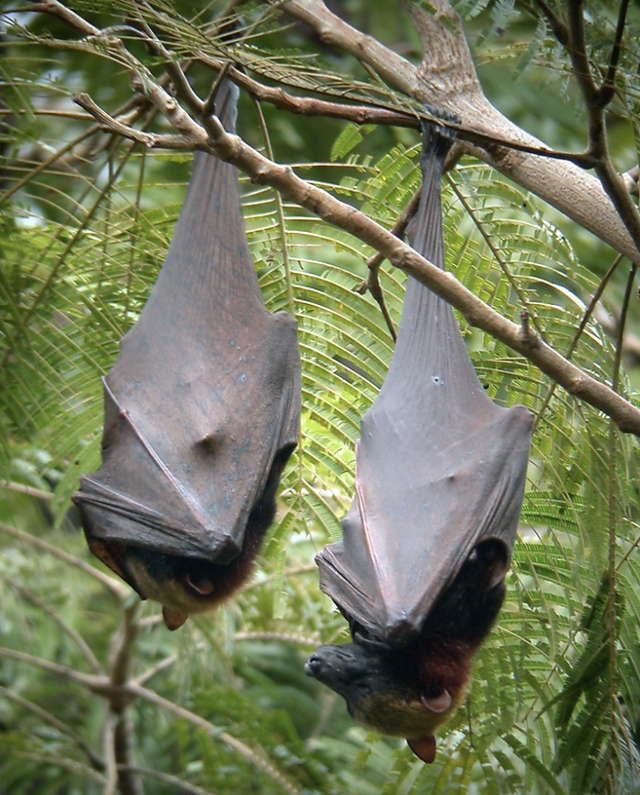This Bat Is Not the Size of a Human (But It Is Very Big)

A viral photo of what appears to be a massive bat has been making the rounds online. The photo, in which a flying fox—a type of bat—is seen perched upside down, is a bit misleading, though.
While flying foxes are the largest bats in the world, they don’t get as big as the one in the picture appears to be.
The camera trick known as “forced perspective” is what makes this bat seem so huge.
The Earth has long been home to startlingly massive megafauna. Just look at the monster penguins that roamed what was once New Zealand or the humongous sloths that ambled around South America. In more modern times, these big beasts are scarce, but they’re still around—and the latest one to grab the internet’s attention is known as the flying fox.
Despite their common name, flying foxes are actually bats who belong to the Pteropus genus and are native to tropical climates in places including Asia, eastern Africa, and Australia.
Remember when I told y'all about the Philippines having human-sized bats? Yeah, this was what I was talking about pic.twitter.com/nTVIMzidbC
— Alex🌠 (@AlexJoestar622) June 24, 2020
These guys can get incredibly large with the golden-crowned flying fox (Acerodon jubatus)—who can develop wingspans of more than 5 feet across—being among the biggest of them all. But the one seen in the photo looks extra big because of the image’s forced perspective which is an optical illusion that can make an object in a photo look bigger or smaller than its true size.
You know those photos that make it look like someone is holding up the Leaning Tower of Pisa? They’re made possible thanks to forced perspective.

The viral photo of the flying fox appears to be zoomed in which would helps account for how massive the animal looks. The illusion of forced perspective only works if you make it seem like the main photo subject in the foreground and the entirety of the background are all relatively close in size. As of publish time, no known flying fox species get quite as big as a human adult.
These megabats, part of the Megachiroptera suborder, might look a bit scary, but they’re pretty docile. They’re also frugivores, eating a (mostly) vegetarian diet comprised of pollen, nectar, fruits, and other flora. On the rare occasion, a flying fox might chow down on an insect if it happens to come across one or catch one by accident during flight.

Flying foxes are also pretty different from the typical smaller critter we think of when we hear “bat.” They do not have the ability to echolocate because they don’t need an internal sonar to track their food. Instead, they use their excellent vision and sense of smell to find it.
The only real danger flying foxes pose to humans is the possible transmission and spread of diseases they may carry. But since flying foxes don’t swoop and attack, people are unlikely to catch anything from them if they’re left alone.
There’s much more to these fascinating creatures than just their—somewhat exaggerated—size.
You Might Also Like

